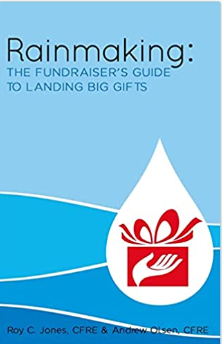Of course, the real question is how many development staff employees should a not-for-profit organization have? A difficult question, and often calculated in a variety of ways.
It does not matter if you are talking about a charity, not-for-profit, educational institution or NGO (non-governmental organization). The questions to ask are the same for all the entities.
My rule has always been one development employee for every $1 million you raise in contributions. Of course, most people may not see this as clear as I do… First and foremost, it truly depends on how involved your CEO and board are in major gift fundraising. If your board and CEO are picking up checks and engaged DAILY in the fund solicitation process then the development staff does not have to be as large.
Of course, the average size of the donations for your not-for-profit matters too… because that dictates the number of transactions your staff will have to process… Remember, every gift regardless of amount should be acknowledged by a thank you letter. In addition, new donors should receive a welcome kit that truly celebrates the fact that they are a new donor to a GREAT cause. Thanking donors is not a cost center… IT IS A REVENUE STREAM.
As development director for a medium size university we used to process about 60,000 gifts a year and the thank you letter (with a reply envelope enclosed) generated over $400,000 a year in NET REVENUES. If we had been pinching pennies and not “staffed up” we would have not been able to do timely acknowledgements and lost nearly $1 million every 24 months.
If you are a development director and your staff is the primary driver for all donations… my “one gift officer for every $1 million” is a very legitimate number.
There are many factors that you, your CEO and board are going to have to answer. It revolves around your constituency and the types of donations your organization generates. There are many questions that you need to factor into the formula: How many people does your non-profit service? What methods do you use to communicate with them? What different fundraising levels are you focusing on (annual fund (direct mail), major gifts, principal gifts, planned giving)? How much support staff is required? Basically taking a good, long, detailed analysis of your organization will help provide the answers.
Also, you might want to research other organization’s org charts that would be equivalent to your project/organization. Benchmarking between organizations is not standard so costs per dollar raised can vary widely depending on interpretation and exclusion/inclusion of such things as facilities costs, the percentage of the CEO’s salary that would be related to fundraising and many other items.
Benchmarking is often done against national organizations such as the United Way and their average cost is compared to the institution. However, these costs may also vary according to the type of organization, types of campaigns they run, the stage of the campaign they’re in, and how many services are provided by the organization centrally.
Cost per dollar raised may also be greater at the beginning of a campaign since there are always additional startup costs such as a gala, ramped up prospect research, system acquisitions and other investments.
James Greenfield provided the following answers in his book, Fund-Raising: Evaluating and Managing the Fund Development Process. The overall national average cost to raise a dollar (CTRD) is 20 cents (or 80 cents of every dollar raised goes to the charitable purpose/programs):
# Fundraising Activity/Method National Cost to Raise a Dollar
1. Capital Campaign/Major Gifts $ .05 to $ .10 per dollar raised.
2. Corporations and Foundations (Grant Writing) $ .20 per dollar raised.
3. Direct Mail Renewal $ .20 per dollar raised.
4. Planned Giving $ .25 per dollar raise¾and a lot of patience!
5. Benefit/Special Events $ .50 of gross proceeds.
6. Direct Mail Acquisition $ 1.00 to $ 1.25 per dollar raised.
7. National Average $ .20
Of course, the real question is how many people associated with a not-for-profit may be engaged in fundraising and may undertake tasks that have a significant fundraising content. If you have a larger ratios of volunteers, it will lower your average cost.
The recent trend in political fundraising on the Internet will also lower your average cost since the acquisition, transaction and retention related costs are often lower than traditional ways of doing this.
So how many development professionals does it take to screw in a light bulb? The answer depends on how big the light bulb is and how much wattage is it throwing out. If you are a small charity that generates under $1 million annually, you should focus on volunteers and make sure your CEO is heavily involved in gift solicitation. However, if you are a $10 million not-for-profit, you had better staff up to provide donor service and cultivate donor relationship. Your staff should be at least ten people in order to maintain that level of giving from one year to the next.
Get that bulb screwed in and flip the light switch!



Great Insight